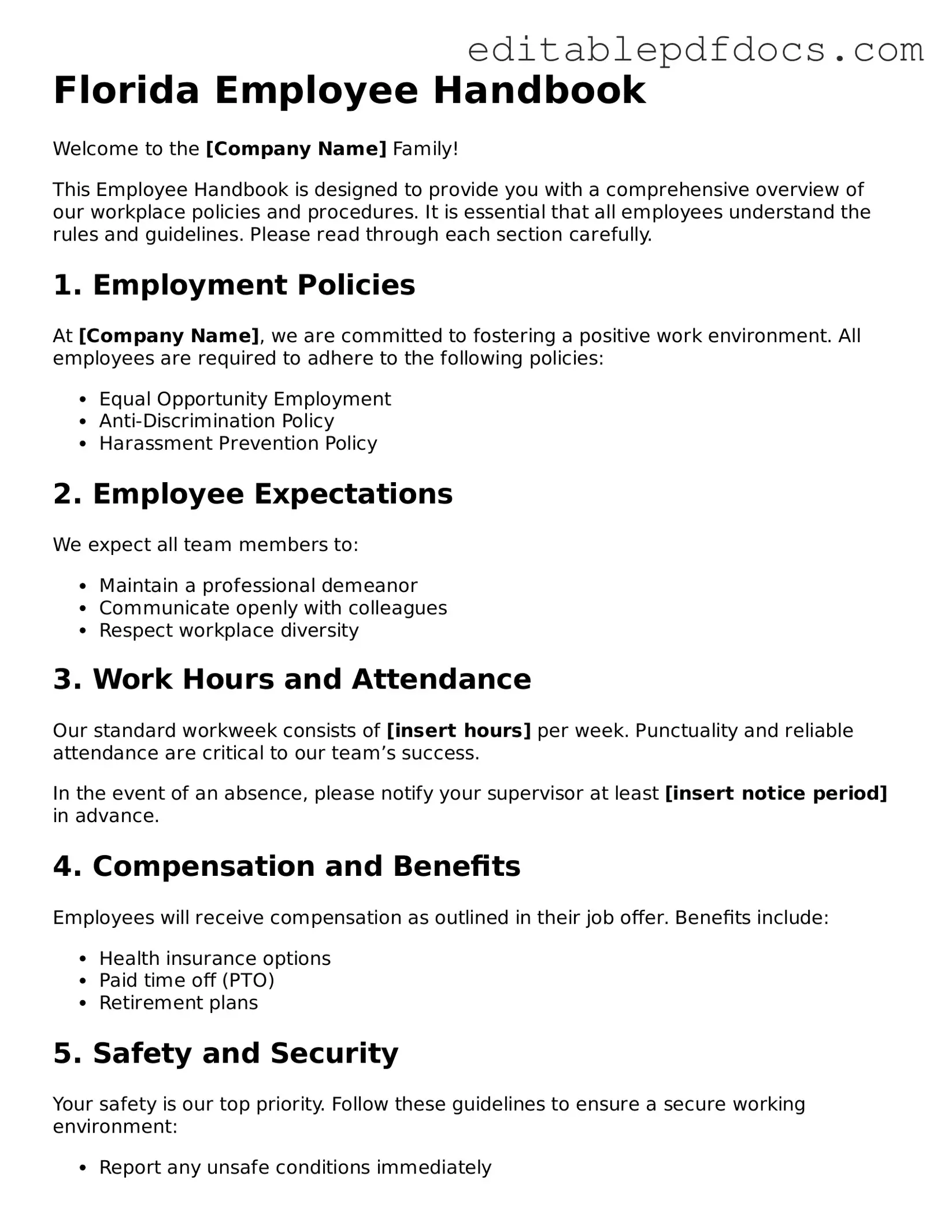Filling out the Florida Employee Handbook form can seem straightforward, but many individuals encounter common pitfalls that can lead to confusion or issues later on. Understanding these mistakes can help ensure a smoother process. One frequent error is neglecting to read the entire handbook before signing. Each section is designed to provide essential information about company policies, benefits, and expectations. Skipping this step can result in misunderstandings about job responsibilities or company culture.
Another common mistake is failing to provide accurate personal information. When filling out the form, it’s crucial to double-check names, addresses, and contact details. Incorrect information can lead to complications with payroll, benefits enrollment, and communication. Always take a moment to review this information before submission.
Many people also overlook the importance of understanding the policies outlined in the handbook. Instead of merely signing the form, individuals should ask questions about any policies that seem unclear. This proactive approach not only clarifies expectations but also demonstrates engagement and responsibility.
Some employees mistakenly assume that all policies are negotiable. While it’s great to have open conversations with management, many aspects of the handbook are standardized. Assuming that every policy can be changed may lead to disappointment. It’s best to approach discussions with an understanding of what is flexible and what is not.
In addition, individuals often forget to sign and date the form. This small oversight can delay processing and create unnecessary complications. A signature signifies understanding and agreement, so it’s essential to complete this step before handing in the form.
Another mistake is not keeping a copy of the signed handbook for personal records. Having a copy can be invaluable for reference, especially if questions arise later regarding policies or procedures. This simple act can save time and confusion down the road.
Some employees might rush through the form, leading to incomplete sections. Each part of the form is designed to gather specific information, and leaving sections blank can cause delays or require follow-up. Taking the time to fill out every section thoroughly is crucial.
Additionally, misunderstandings about confidentiality policies can arise. Some individuals may not realize that certain information must remain private, both for their protection and the company’s. Familiarizing oneself with these policies helps maintain a respectful and secure work environment.
Lastly, individuals sometimes fail to discuss the handbook with their supervisors or HR representatives. Open communication can clarify any uncertainties and foster a better understanding of workplace expectations. Engaging in these discussions shows initiative and a commitment to a positive workplace culture.
By being mindful of these common mistakes, employees can navigate the Florida Employee Handbook form more effectively. Taking the time to read, understand, and complete the form accurately sets the stage for a successful and fulfilling employment experience.
